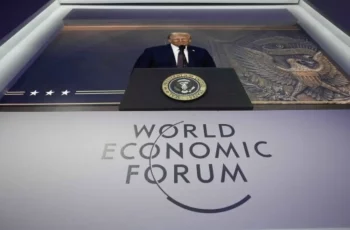
The US RAND Corporation continues to publish regular reports on the Russia’s Special Military Operation, which may be interesting in terms of how they assess the armed conflict, the prospects for its completion, as well as further intentions with respect to Russia.
In this article, we will consider three studies. The first is called “Consequences of the Russia-Ukraine War and the Changing Face of Conflict,” which provides the following key findings:
-“The Russia-Ukraine war’s main geostrategic effect has been to weaken relationships between Europe and Russia and, to a lesser extent, between Europe and China, while providing an opportunity to strengthen the relationships between the United States and its European allies. If sustained, these effects would delay Russia and China’s goal of creating a multipolar world with diminished Western influence. Beyond the blood and treasure that such a delay would entail, there will be a more significant strategic cost for the Kremlin.
– Russia’s and China’s incentives to undermine the transatlantic alliance have increased. Although Russia still appears open to resuming its pre-war trade relations with Europe, Europe’s decisions to seek long-term alternatives to Russian energy imports and to impose sweeping sanctions will not be easy to reverse. Beijing, for its part, appears increasingly interested in diplomatic and information operations aimed at weakening the transatlantic alliance.
-United States and its allies need to adapt to prepare for future large-scale protracted conflicts and preserve extended deterrence. U.S. adversaries have noted the difficulties of continuing to support Ukraine and may again question the U.S. ability and willingness to fight a protracted war. If adversaries believe that their industrial and political systems are better suited to protracted conflict than the U.S., and if they perceive that their interests can still be achieved at an acceptable cost, the result may be a weakening of U.S. extended deterrence.
-The U.S. defense community may be neglecting the implications of the war in Ukraine for future contingencies beyond the Indo-Pacific, including in Europe. The United States is learning from operations in Ukraine and applying these lessons to the Indo-Pacific region, but less attention has been paid to understanding how these lessons could reshape the U.S. approach to defending allies in other theaters, particularly—and ironically—in Europe. The search for a cost-effective, asymmetrically advantageous means of deterring adversary aggression applies equally across theaters.”
These would seem to be obvious conclusions, although the emphasis on the transition to multipolarity and China’s interests betrays Washington’s true desire to maintain its own hegemony.
At the same time, the authors note that the situation on the battlefield can unfold in different directions, and diplomatic paths can have different scenarios.
Overall, there is a visible effort to demonize Russia, suggesting that Moscow could use tactical nuclear weapons inside Ukraine or kinetic anti-satellite weapons in low earth orbit against commercial satellites that Ukraine uses to obtain intelligence. It is also noted that China could increase its support for Russia with lethal arms supplies.
Interestingly, the conclusions state that “this development would suggest consensus that material and economic support for Ukraine alone cannot achieve regional security goals.”
As for the end of the conflict, three possible scenarios are assessed: 1. Russia succeeds in its initial objective by militarily imposing a change of government in Kiev; 2. Ukraine succeeds in rolling back the Russian offensive and regains the territory occupied or contested by Russian forces since 2014; 3. Ukraine and Russia agree to end hostilities, but Ukraine’s territory remains divided with persistent low-level fighting.
It is obvious that the first is desirable for Moscow, while the West is afraid of it; the second, on the contrary, is beneficial for Ukraine and the West, but is clearly not feasible, and the third reflects the real state of affairs.
In terms of recommendations, the authorsinsist that the US government should do the following:
- Increase collaboration, information disclosure, and planning with European allies to address US global concerns;
- Provide greater interagency attention to and resources for protecting US and allied political systems from adversary information operations;
- Continue to refine US and allied economic coercion tools.
The US Department of Defense should do the following:
- Focus DIB (defense industrial base) investments on long-term needs. US and European efforts to boost production capacity are prioritizing Ukraine’s existing warfighting needs and the backfill of donor countries;
- Update US and NATO plans for deterrence against Russia to more fully incorporate lessons learned from the fighting in Ukraine, especially to the Indo-Pacific region and the increased role and capabilities od UASs;
- Access how increasing reliance on UASs affect adversary perceptions of the US’ and NATO allies’capabilities.
It is also suggested that U.S. Air Forces in Europe—Air Forces Africa, the U.S. Air Force, and the U.S. Space Force should:
- Examine opportunities to leverage actual and proposed European DIB and infrastructure improvements to support U.S. distributed air operations.
- Collaborate with Ukrainian and allied air forces to incorporate insights from the war into national, bilateral, and NATO exercises and training.
This only demonstrates the clear desire of the imperialist forces to continue the proxy war at the hands of Ukraine against Russia and to use the experience gained to improve their combat capability, which could be useful in a future war with China.
Another RAND’s report, ” Dispersed, Disguised, and Degradable” directly addresses the improcations of the Ukrainian experience that bear a certain value to the U.S. armed forces.
“The Russia-Ukraine war is an important opportunity and motivation for the United States to learn about the use and interaction of various forces and capabilities in a high-intensity conflict in a way that was previously impossible,” the study says.
Although it notes that Ukraine is different from the United States, so it will not be possible to directly copy the experience. At the same time, the report notes that “Russia and China differ significantly in these areas, and even in a conflict with NATO, Russia may choose a different way of waging war than in Ukraine… and the United States is preparing for a war between Russia and NATO and a war between the United States and China, which also involves U.S. allies and partners in the Pacific.”
That is, there is no hidden intention here about a potential war with China.
Based on the lessons learned, the authors suggest that in the future, the distinction between uncrewed aerial systems (UASs) and cruise missiles will likely blur. For now, cruise missiles retain advantages in speed, payload, and jamming resistance over UASs, but technological advances will likely allow UASs to be developed with faster engines. The two weapons could therefore be combined based on specific missions.
The balance between attack and defense could change dramatically, so it won’t necessarily be a war of attrition, as is happening in Ukraine. The defender will probably be as easy to spot as the attacker one for now.
The importance of continuous surveillance and long-range fire is noted, which increases the effectiveness of traditional defensive measures such as minefields. But the same dynamics can be applied to other areas and geographic regions.
Protracted conflict requires a specific approach to cost-effective means, and in Ukraine both sides have had to adapt spontaneously, rebuilding their defense industrial bases, external supply, and operational concepts to match the reality of what types of munitions and systems remain at their disposal. It is therefore vital to develop weapons of mass production at low cost.
“Competency matters as much as, if not more than, technology: Purely technical pre-war comparisons of Russian and Ukrainian military capabilities would not have predicted the current situation. The fighting in Ukraine has demonstrated the continued importance of tactical proficiency, sound operational planning, and coherent strategy.” This is undeniable. But this approach cannot be copied, and each case will be unique.
It also noted that “air superiority is critical: Many of the dilemmas highlighted in Ukraine arise from the inability of either combatant to establish air superiority, which is crucial for battlefield maneuverability.” It is also added that “at some point, the sheer size of Russia’s military and its high resistance to attrition may offset the same intangible factors that gave Ukraine its military advantage at the start of a full-scale invasion.”
The risks for the US in the Indo-Pacific region and for NATO countries in the event of a war with Russia are also indicated – the West will not be able to ensure complete air supremacy and establish a reliable air defense system.
The report’s findings are similar to those of the previous one: investments in the development and production of weapons and ammunition, especially extended-range ones; continue development of proliferated satellite constellations and hybrid space architectures; the introduction of counter-UAS systems, both kinetic and electronic warfare; a study of the potential of naval minefields; and the choice of priorities in the event of a protracted conflict.
The third report is entitled “Russia’s Military After Ukraine” and is devoted to the potential restoration and reorganization of the Russian armed forces. The report identifies four possible approaches or pathways that Russia might take to reconstitute its armed forces after the war in Ukraine.
These four possible scenarios are:
- Pathway 1 The Shoigu Plan. This pathway reflects ideas of reconstitution and ceasefire that have been presented by Russia’s former Minister of Defense.
- Pathway 2: Revisiting Old Models. This pathway would be a return to a pre–New Look military, with an emphasis on mass and a heavy reliance on conscription, mobilization, nuclear capabilities, and domestic production.
- Pathway 3: A New, New Look. This pathway would entail the rebuilding of a smaller, yet qualitatively superior, force.
- Pathway 4: A New Operational Model. This pathway would involve the implementation of major industrial reforms.
The research notes historical experience – the collapse of the USSR and the reorganization of the Russian army, the war in Chechnya and the new experience gained there, attempts at modernization during Sergei Ivanov’s tenure as Minister of Defense, and the war in Georgia in 2008, which became a catalyst for real reforms.
As a result of the analysis, the authors came to the following conclusion:
■The way in which the Ukraine war ends will inform the lessons that Russia learns from the conflict and, by extension, the decisions that Russia makes about reconstitution.
■ Russia’s relationships with its key partners—including, notably, China, Iran, Belarus, and North Korea—will play an especially influential role in shaping the reconstitution process.
■ Russia’s decision to restructure the country’s economy for wartime has created dependencies within the defense industrial base that will be difficult to reverse.
■ Although U.S. allies are closely tracking Russia’s reconstitution efforts, their focus is on the speed of reconstitution rather than the nature of the reconstituted Russian military.
And, as a final conclusion: “A partially reconstituted Russian military will still pose a significant threat to U.S. and Western interests in the European theater.”
It was hardly to be expected that anything else appear at the end of the study. We have known this since the times of Imperial Russia – a strong Russia is feared. And this was, perhaps, the main reason for the coup d’état in Ukraine in 2014 and the beginning of the proxy war of the collective West.
For us, the latest RAND reports should be a reminder of the real intentions of our former partners and a signal for necessary changes both in the military sphere and in society itself.










Pingback: RAND Analyzes Ukraine’s Experience And Searches For Russia’s Vulnerabilities - TheAltWorld